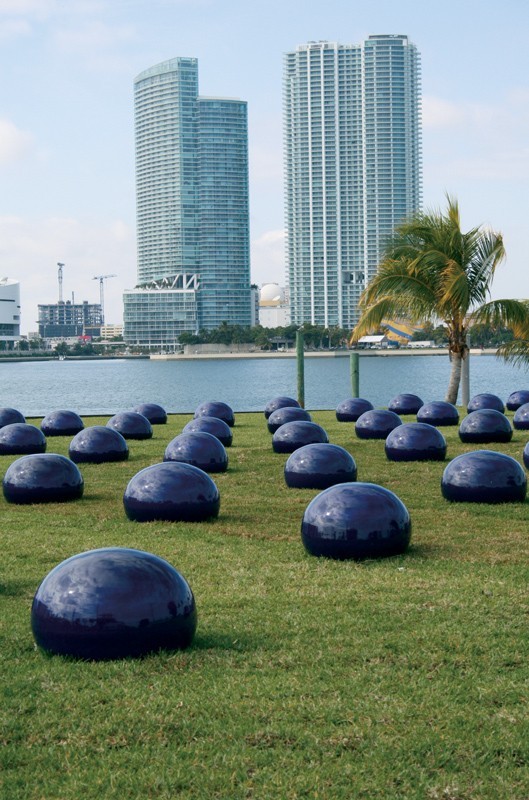
Ai Weiwei, Bubbles, installation view, Watson Island, Miami, 2008. Porcelain. (Courtesy, Bigstock.)
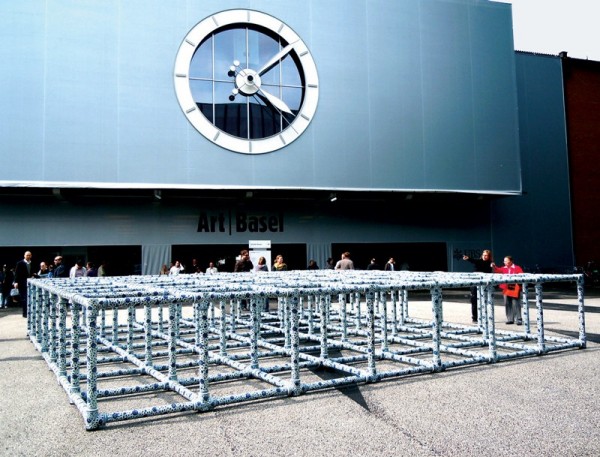
Ai Weiwei, Field, installation view, Art Basel, Basel, Germany, 2010. Porcelain, 291 5/16" x 291 5/16". (Courtesy, the artist and Galerie Urs Meile, Beijing-Lucerne.)
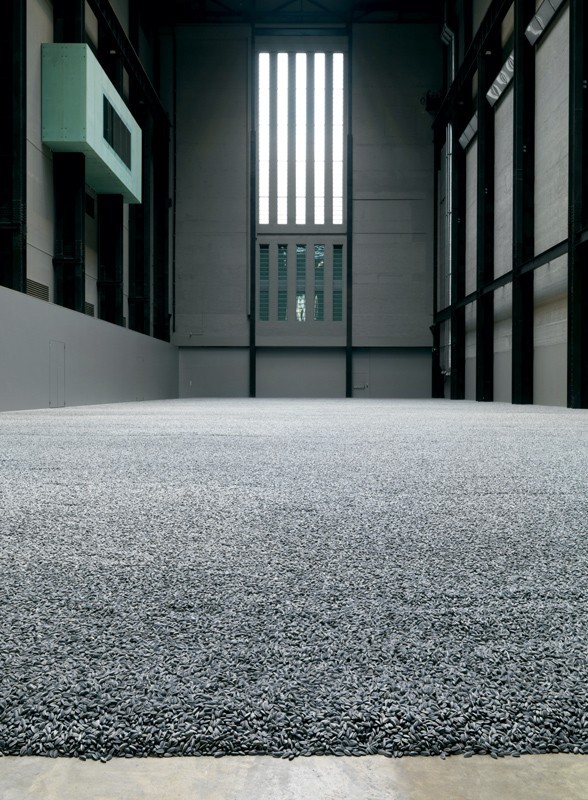
Ai Weiwei, Sunflower Seeds, installation view, Turbine Hall, Tate Modern, London, 2011. Porcelain. (Courtesy, Tate.)
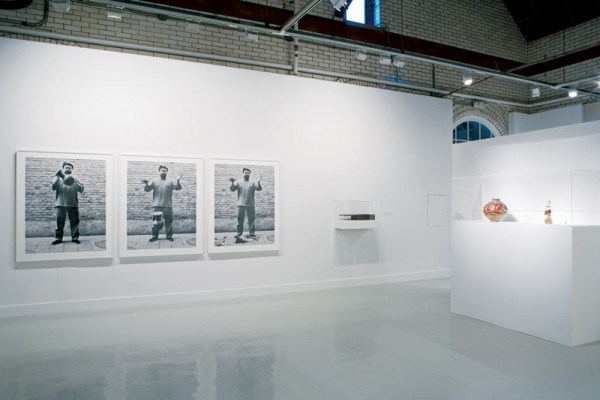
“Ai Weiwei: Dropping the Urn,” installation view, Arcadia University Art Gallery, Glenside, Pennsylvania, February 24–April 18, 2010. (Courtesy, Arcadia University Art Gallery; photo, Aaron Igler, Greenhouse Media.)
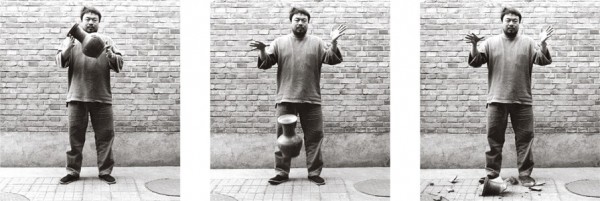
Ai Weiwei, Dropping a Han Dynasty Urn, 1995. Triptych of gelatin silver prints, edition of 8, no. 4. Each print 49 5/8" x 39 1/4". (Courtesy, the artist.)
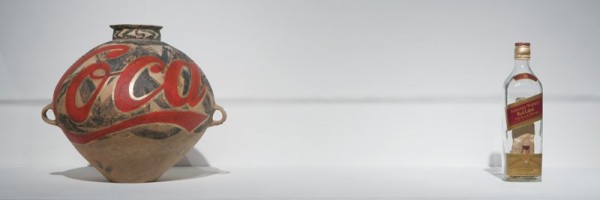
Ai Weiwei, Untitled (see fig. 7) and Coca-Cola Vase (see fig. 8), installation view. (Courtesy, the artist and Arcadia University Art Gallery.)
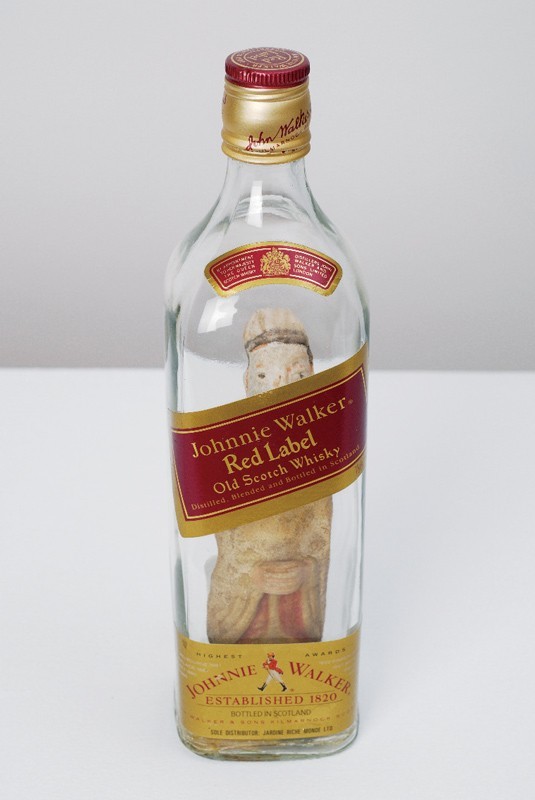
Ai Weiwei, Untitled, 1993. Clay sculpture dating from the Song dynasty (960–1279) inserted within a Johnnie Walker Red Label bottle. H. of bottle 9 5/8". (Courtesy, Urs Meile Collection.)
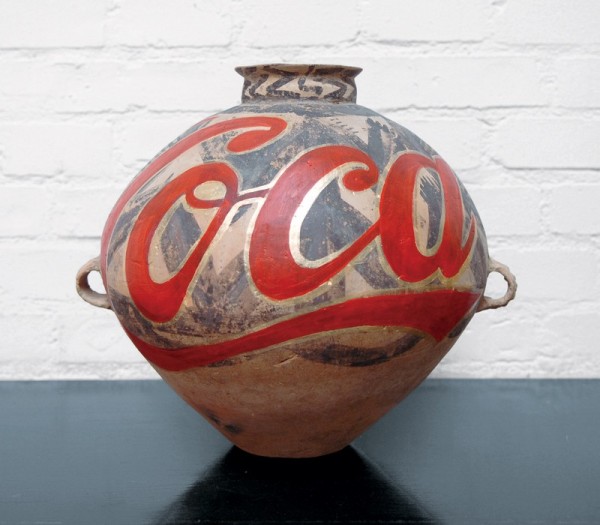
Ai Weiwei, Coca-Cola Vase, 1997. Vase from Neolithic Age (5000–3000 BCE), painted. H. 11 7/8". (Courtesy, André Stockcamp and Christopher Tsai Collection.)
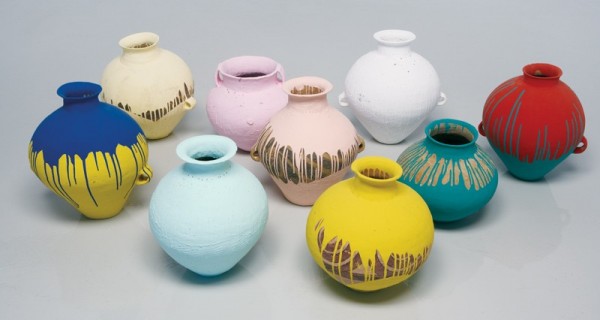
Ai Weiwei, Colored Vases, 2006–2008. Nine vases from the Neolithic age (5000–3000 BCE) and household paint. H. 10–14 1/2". (Courtesy, the artist and Arcadia University Art Gallery.)
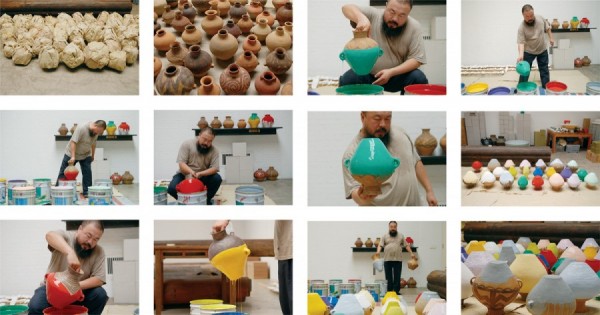
Ai Weiwei, (Making of) Colored Vases, 2006–2010. Twelve production stills from single-channel video. (Courtesy, the artist.)
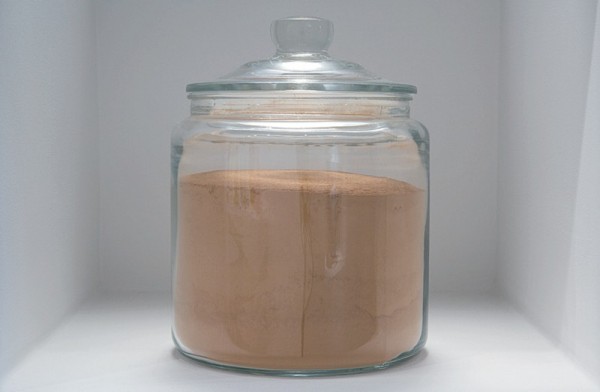
Ai Weiwei, Dust to Dust, 2009, installation view. Ground Neolithic pottery (5000–3000 BCE) and glass jar. H. 10 1/4". (Courtesy, the artist and Arcadia University Art Gallery.)
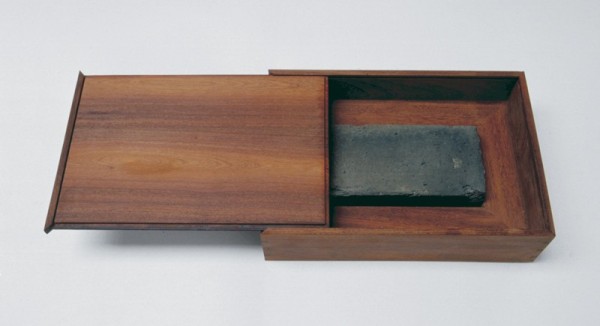
Ai Weiwei, Souvenir from Beijing, 2002, installation view. Brick from dismantled hutong house, ironwood from dismantled temple from the Qing dynasty (1644–1911). L. 13 3/4". (Courtesy, the artist; Leister Foundation, Switzerland; Erlenmeyer Stiftung, Switzerland and Galerie Urs Meile, Beijing-Lucerne.)
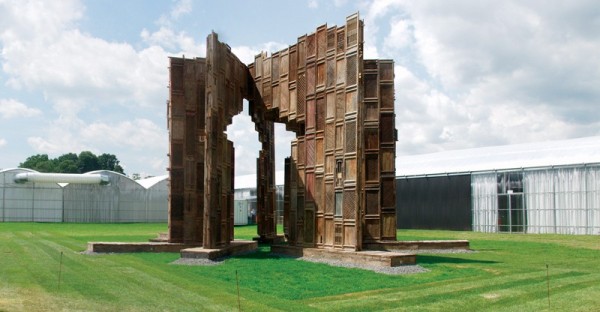
Ai Weiwei, Template, installation at “Documenta 12,” Kassel, Germany, 2007. Wooden doors and windows taken from destroyed Ming- and Qing-dynasty houses, wooden base. (Courtesy, the artist; Leister Foundation, Switzerland; Erlenmeyer Stiftung, Switzerland and Galerie Urs Meile, Beijing-Lucerne.)
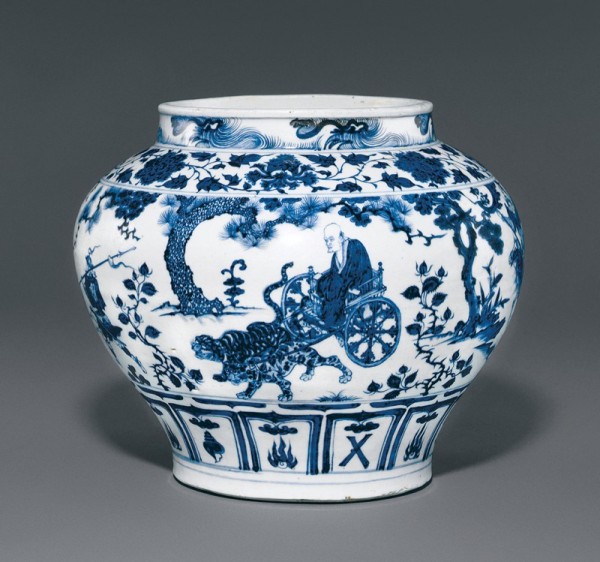
Guan with painted decoration of Daoist Immortal, China, Yuan dynasty, mid-14th century. Porcelain painted with cobalt blue under clear glaze. D. 13". (Courtesy, Christie’s.) On July 12, 2005, this jar sold at auction for £15,688,000; Chinese Ceramics and Works of Art, Including Export Art, sale cat., Christie’s, London (King Street), lot 88.
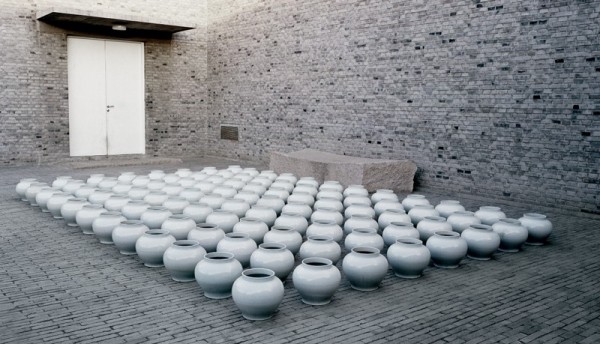
Ai Weiwei and Serge Spitzer, Ghost Gu Descending the Mountain, 2006. Blue-and-white porcelain, 96 vases in each group. H. of each vase 10 5/8". Ai Weiwei's studio, Beijing, 2006. (Courtesy, Ai Weiwei and Arcadia University Art Gallery; photo, Aaron Igler and Matt Suib.)
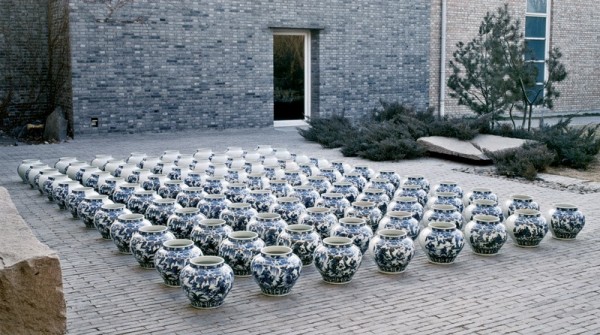
Reverse view of Ghost Gu Descending the Mountain, illustrated in fig. 15.
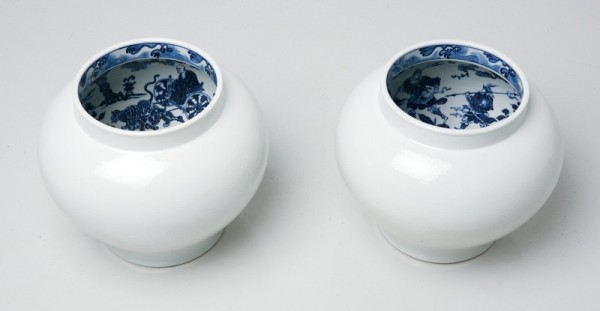
Two vases from Ghost Gu, illustrated in figs. 15, 16. (Courtesy, the artist and Arcadia University Art Gallery.)
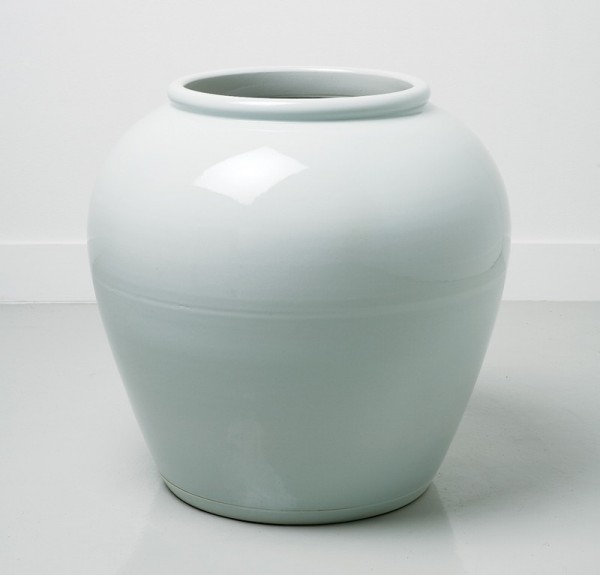
Ai Weiwei, Untitled, 2009. Glazed porcelain. H. 30". (Courtesy, the artist and Arcadia University Art Gallery.)
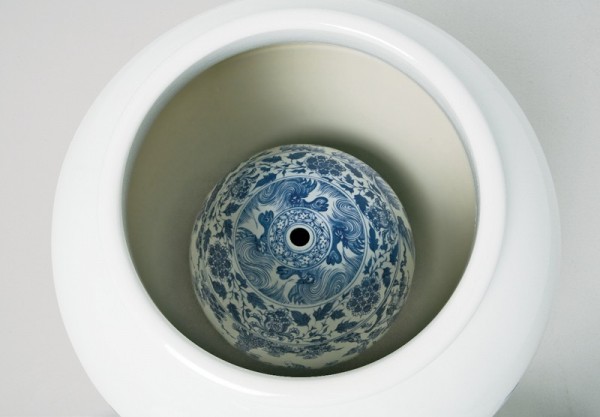
Interior view of the vase illustrated in fig. 18.
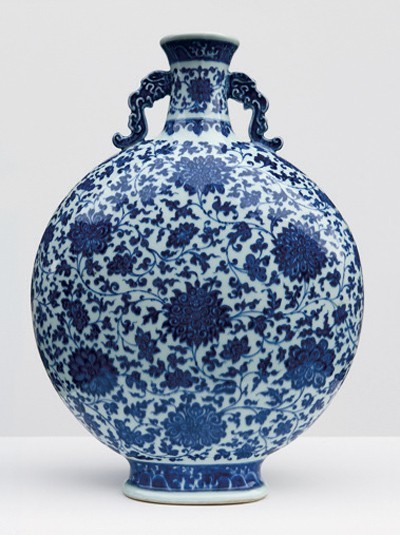
Ai Weiwei, Blue and White Moonflask, 1996. Porcelain, cobalt brushwork, glaze. H. 20 7/8". (Courtesy, the artist and Arcadia University Art Gallery.) This replica is in the style of the Qing dynasty, Qianlong reign-period (1736–1795).
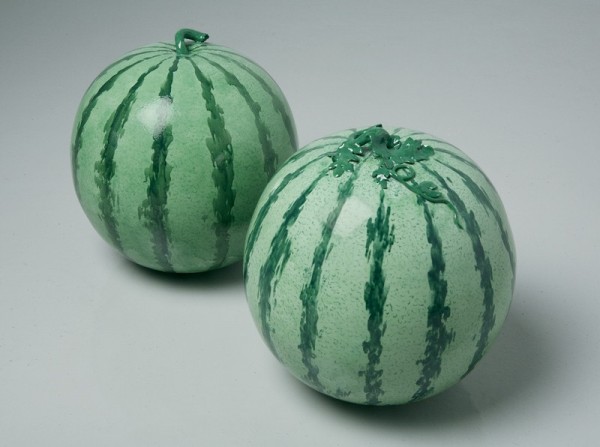
Ai Weiwei, Watermelons, 2006, installation view. Glazed porcelain. H. of each 17 1/2". (Courtesy, the artist and Arcadia University Art Gallery.)
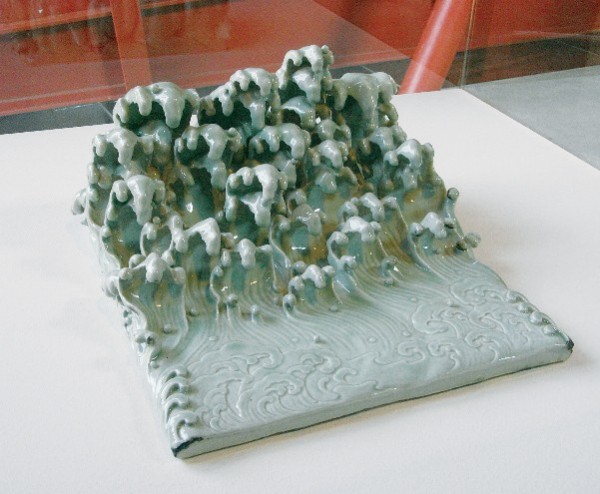
Ai Weiwei, Wave, 2005. Celadon-glazed porcelain. L. 16".(Courtesy, the artist and Galerie Urs Meile, Beijing-Lucerne.)
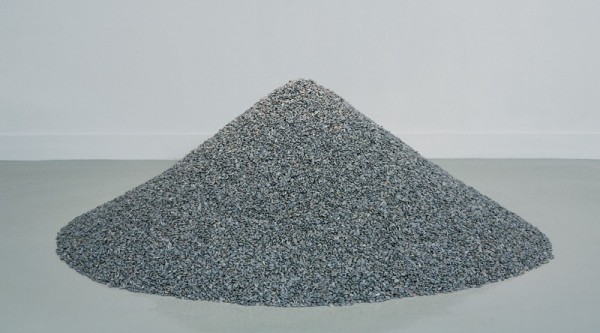
Ai Weiwei, Kui Hua Zi (Sunflower Seeds), 2009, installation view. Porcelain and ink. Diam. approx. 80", wt. 1 ton. (Courtesy, the artist and Arcadia University Art Gallery.)
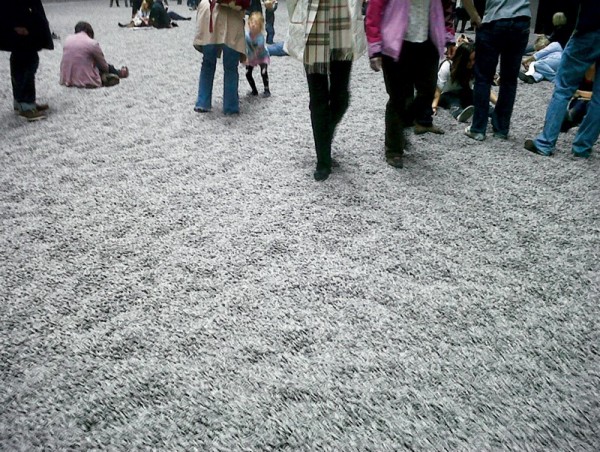
Visitors walking on Sunflower Seeds, Turbine Hall, Tate Modern, London, 2010. (Courtesy, Tate.)
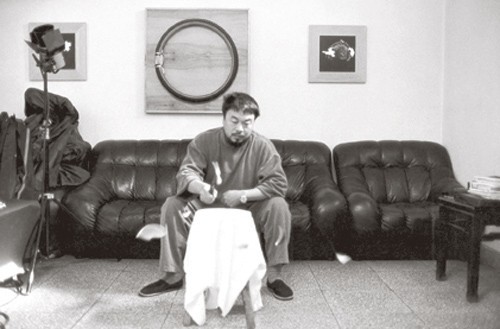
Ai Weiwei, Breaking of Two Blue and White “Dragon” Bowls, performance view, 1996. Porcelain bowls from Kangxi era (1661–1722). (Photo, Ai Weiwei.)
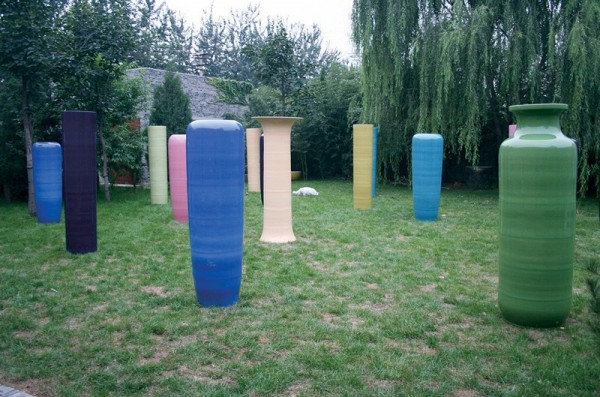
Ai Weiwei, Pillars, installation view, Ai Weiwei’s studio, Beijing, 2006. Sixteen glazed porcelain vessels. H. 70–86". (Courtesy, the artist.)
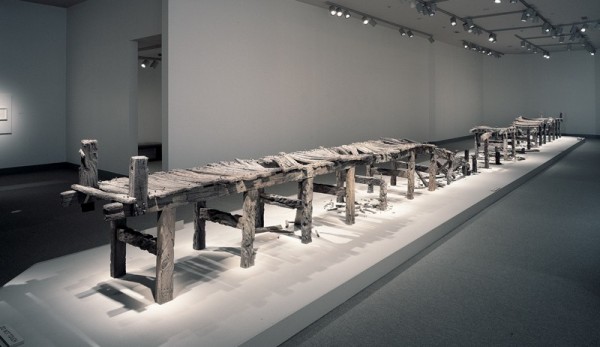
Ah Leon, Bridge, installation view, Freer Sackler Galleries, Smithsonian Institution, Washington, D.C., 1997. Stoneware. L. 60'. (Courtesy, Freer Sackler Galleries.)
